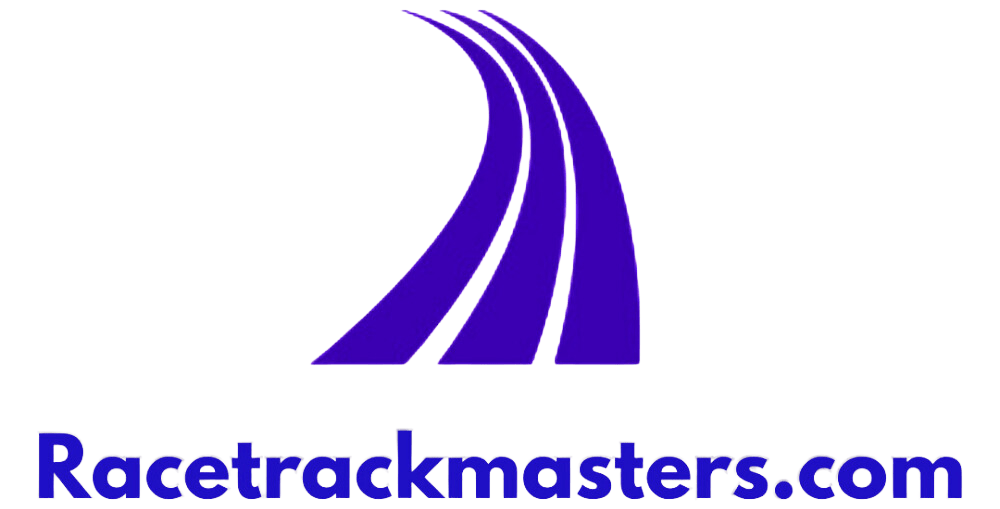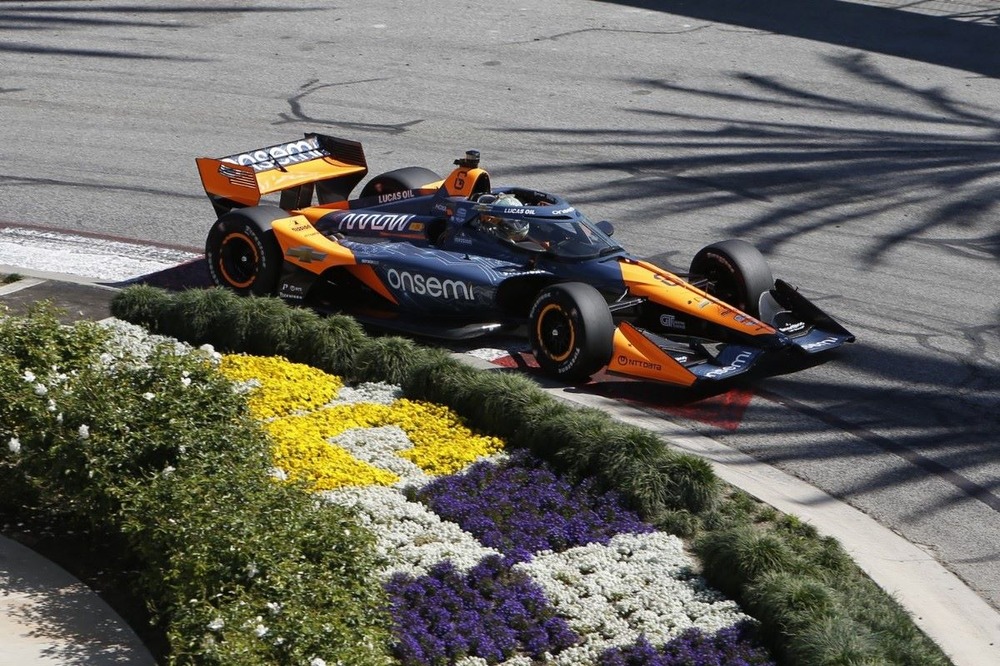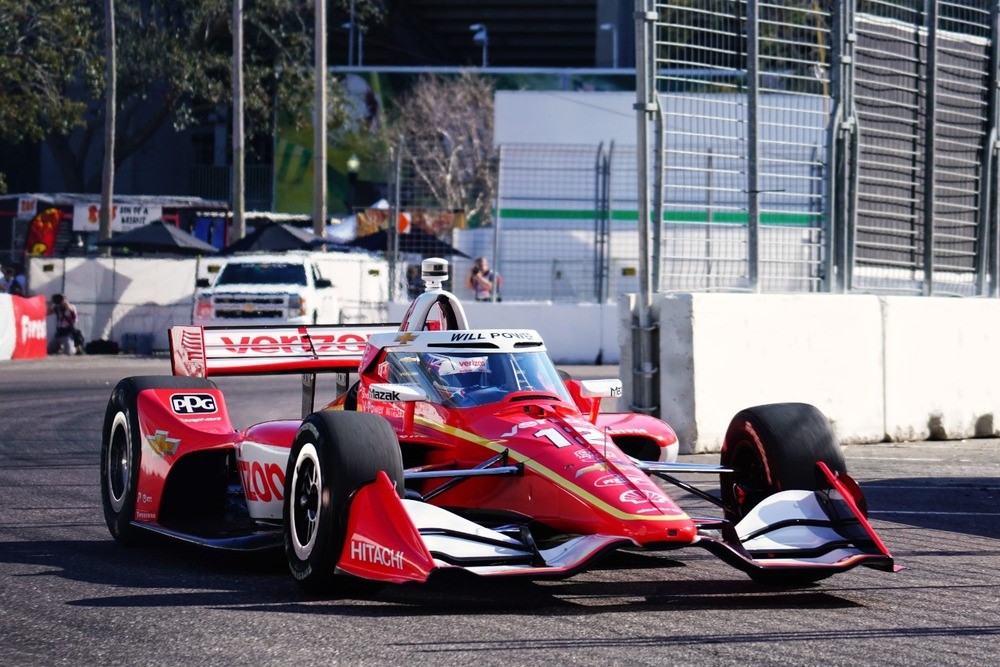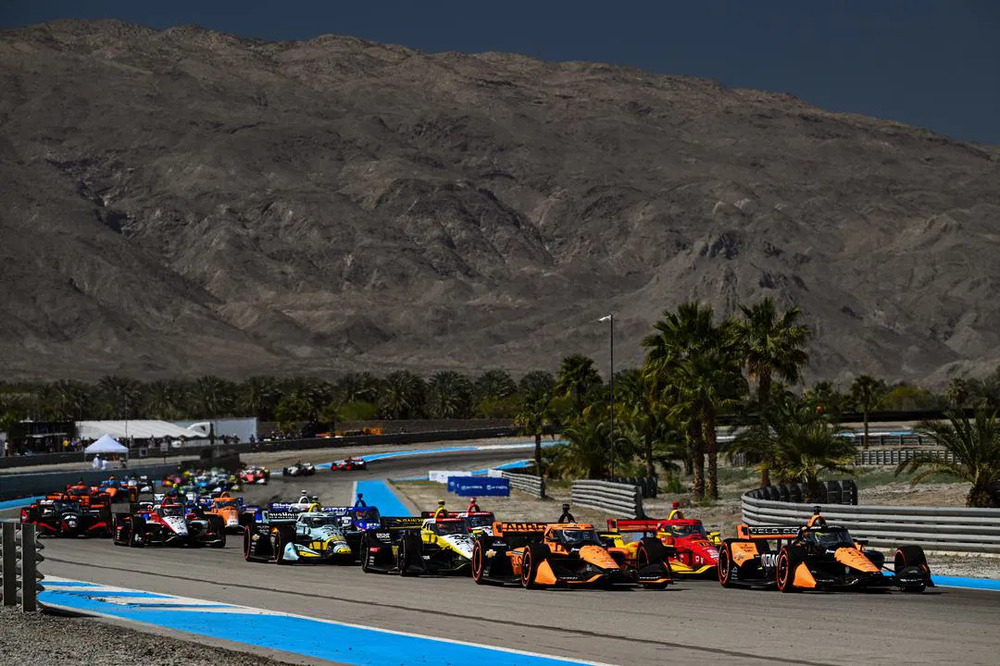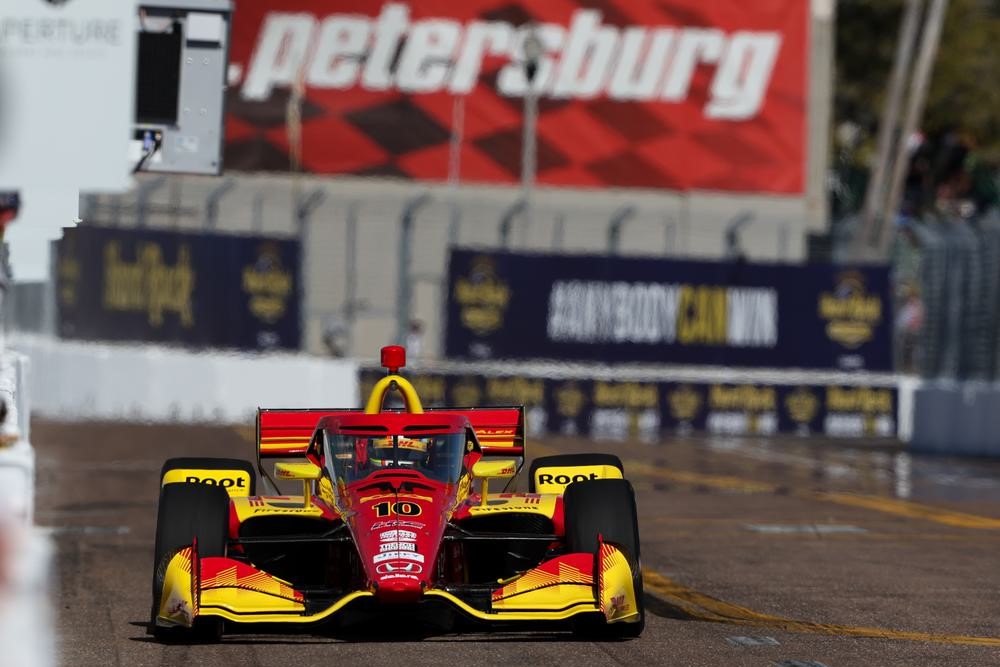Arrow McLaren‘s Nolan Siegel stunned the field with the fastest lap time in IndyCar Long Beach Practice 2, marking a significant milestone in his young career.
The 20-year-old Californian driving the No. 6 Chevrolet-powered machine clocked an impressive lap time of 1:07.1169, edging out Andretti Global’s Colton Herta by a razor-thin margin of 0.0479s, signaling Arrow McLaren’s potential to challenge for victory on the iconic street circuit.
IndyCar Long Beach Practice 2 was held under clear skies and ideal track conditions which saw drivers fine-tune their setups ahead of qualifying, with tire strategy and traffic management playing pivotal roles in the final standings.
Nolan Siegel’s table-topping performance came on Firestone’s softer alternate tires, a compound that provided the necessary grip to attack the 11-turn, 1.968-mile circuit.
His lap, set on the 19th of 20 total laps, showcased remarkable consistency and confidence particularly in the high-speed esses leading to the Shoreline Drive straight.
Meanwhile, Colton Herta piloting the No. 26 Andretti Honda opted for the harder primary tires yet managed to secure second place, a testament to his car’s mechanical grip and his own mastery of Long Beach’s technical sections.
The 2021 race winner’s ability to stay within striking distance of Siegel without the tire advantage highlights the fierce competition expected in qualifying and the race.
Rahal Letterman Lanigan Racing’s Louis Foster emerged as the surprise package of the session, slotting into third with a time just 0.0924s adrift of Siegel.
The British rookie making only his fourth IndyCar start demonstrated maturity beyond his years by focusing on race simulations early before unleashing a late flyer that vaulted him ahead of established stars.
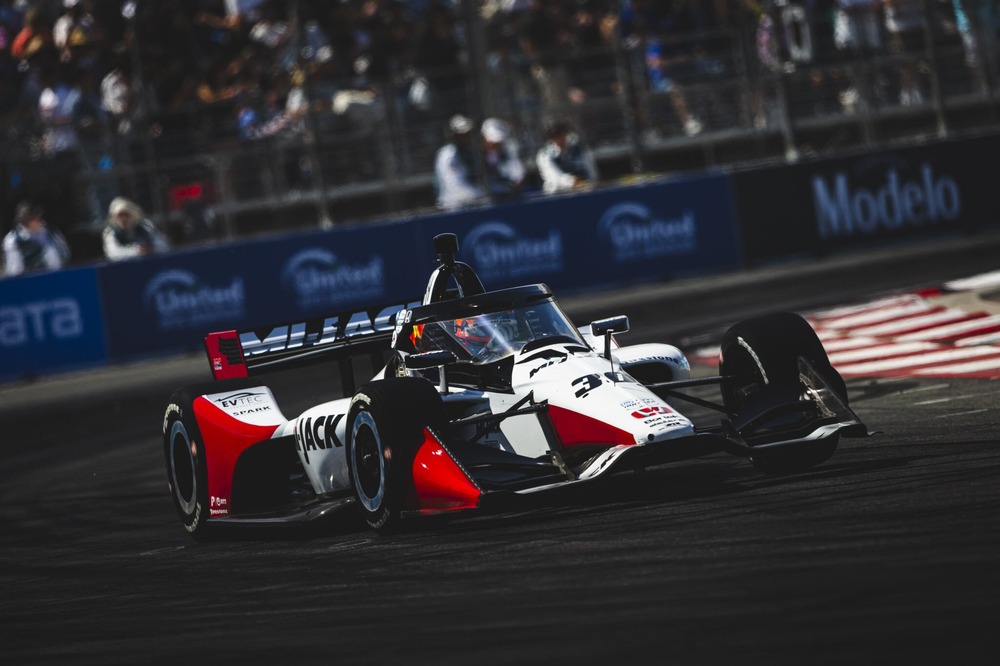
Team Penske’s Will Power who was fastest in Friday’s opening practice settled for fourth despite struggling with understeer in the hairpin while Kyle Kirkwood completed the top five for Andretti Global, all drivers separated by less than three-tenths of a second.
MORE INDYCAR:
Full 2025 IndyCar Long Beach Practice 2 Results
IndyCar Long Beach 2025: Will Power fastest in Friday’s practice
Further down the order, Team Penske’s Josef Newgarden took 6th while reigning series champion Alex Palou secured seventh for Chip Ganassi Racing, his No. 10 Honda showing improved balance compared to previous street course outings.
AJ Foyt Enterprises’ David Malukas turned heads with an eighth-place effort, outpacing Arrow McLaren’s Christian Lundgaard (10th).
The most dramatic moment in IndyCar Long Beach Practice 2 came when Scott Dixon brushed the wall at Turn 8 damaging his right-rear rim but avoiding major suspension damage.
The six-time champion’s Chip Ganassi crew worked feverishly to repair the No. 9 Honda, allowing him to complete 18 laps and finish ninth.
Prema Racing’s Robert Shwartzman wasn’t as fortunate, breaking a toe link after grazing the concrete barriers at the exit of Turn 6. The Russian driver, making his second IndyCar start, managed only 15 laps before parking the No. 83 Chevrolet, leaving his team with significant setup work ahead of qualifying.
Meyer Shank Racing’s Felix Rosenqvist (14th) and Ed Carpenter Racing’s Christian Rasmussen (15th) both showed flashes of speed but struggled to string together clean laps in heavy traffic.
At the tail end, Juncos Hollinger Racing’s Sting Ray Robb and Dale Coyne Racing’s Jacob Abel faced persistent understeer issues, finishing 26th and 27th respectively.
The most intriguing subplot in IndyCar Long Beach Practice 2 centered on tire strategy with teams split between focusing on qualifying simulations and long-run pace.
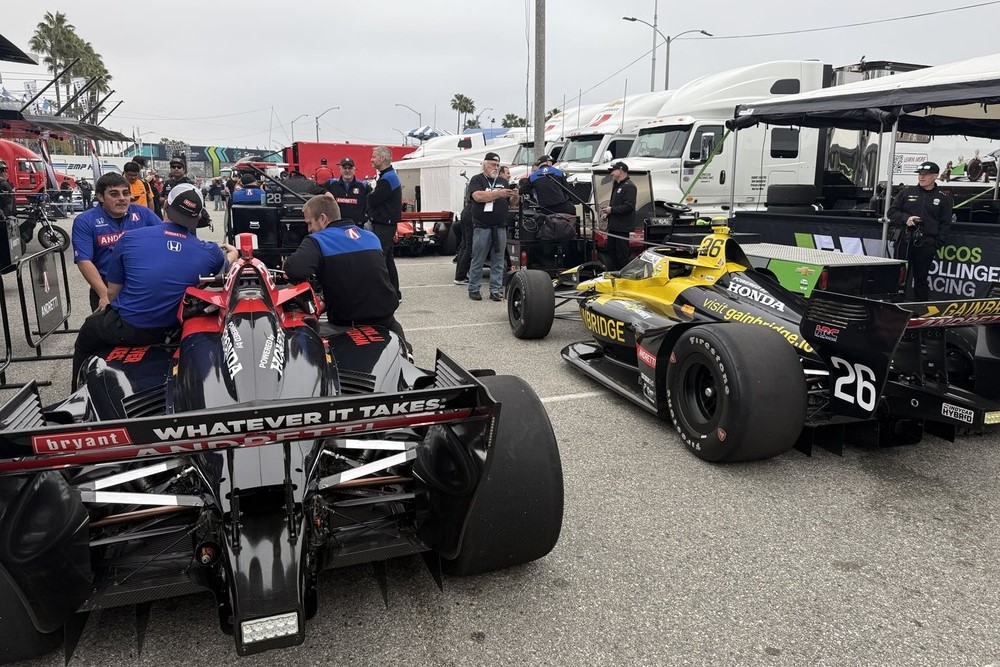
Arrow McLaren’s decision to bolt on the red-sidewall alternates early paid dividends for Nolan Siegel, while Herta’s choice to stick with primes suggests Andretti Global is prioritizing race-day performance.
Team Penske’s trio of Power, Newgarden, and Scott McLaughlin (11th) appeared to focus on heavy fuel runs, their times not fully representative of single-lap potential.
The conservative approach raised eyebrows given Penske’s recent qualifying struggles, including a disappointing showing at the previous round in Texas where none of their cars advanced to the Firestone Fast Six.
As the checkered flag fell, the timing screens painted a picture of a series operating at unprecedented competitive depth. The top 15 drivers were covered by 0.7810s, with engine parity between Chevrolet and Honda evident as both manufacturers placed three cars in the top six.
